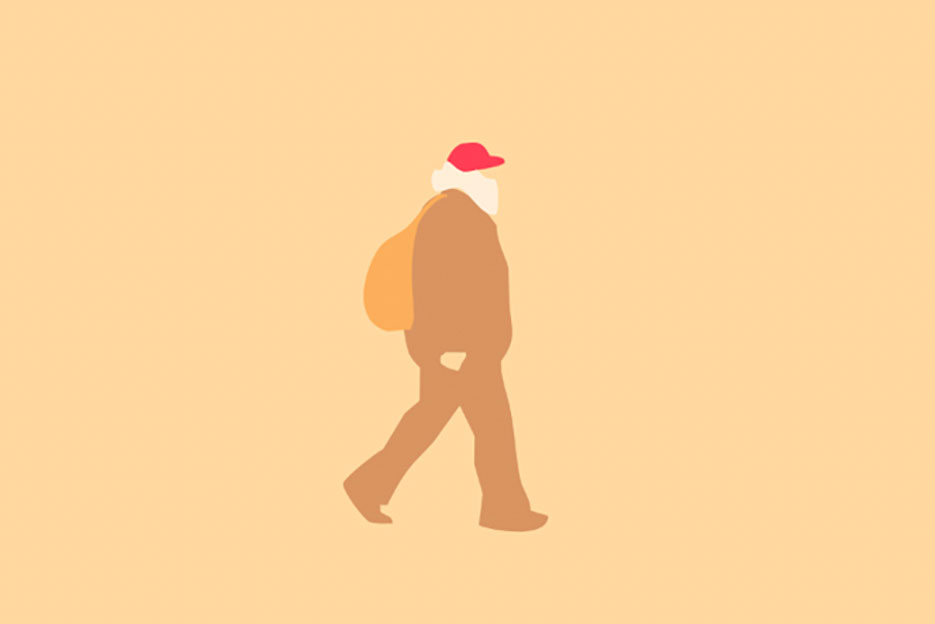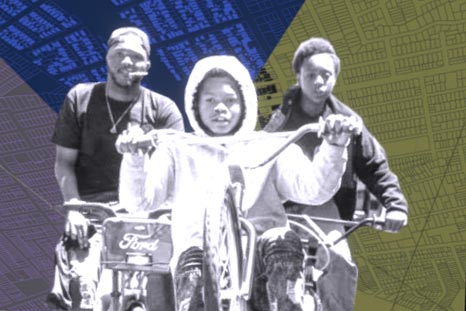Wed August 20th Open 11 AM–5 PM
From Physical to Digital: How Artists are Adapting Work Due to COVID-19 Restrictions
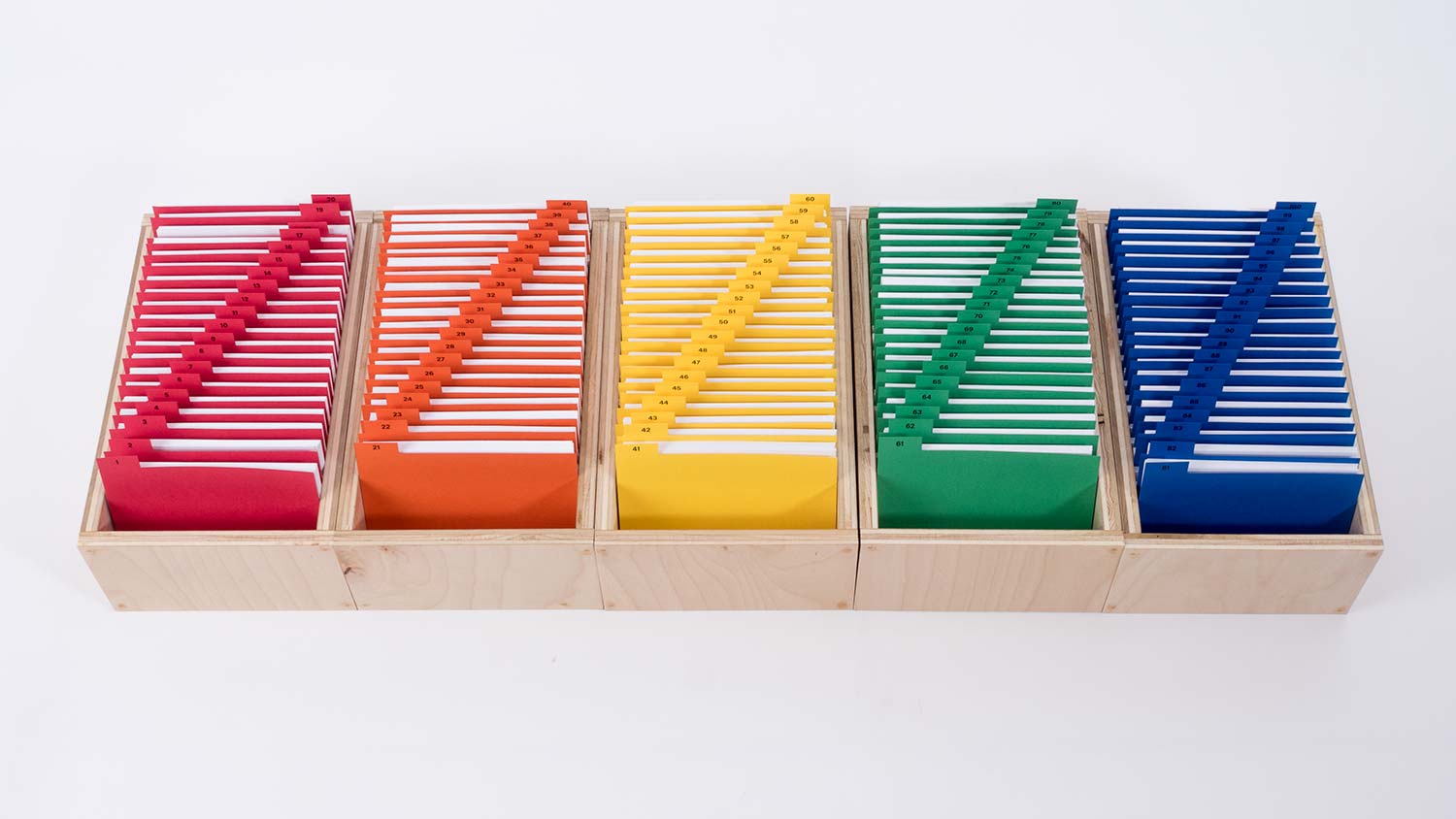
This article is part of the ongoing Come to Your Census: Who Counts in America? experience. This collaboration with Art+Action is part of their COME TO YOUR CENSUS campaign—powered by San Francisco’s Office of Civic Engagement and Immigrant Affairs (OCEIA)—which hopes to mobilize the public to take the 2020 U.S. Census. We want everyone to be counted and receive their fair share of funding and political representation for their community.
If you have not already done so, we highly encourage you to take the 2020 US Census.
Breaking ICE: A Community Response to a Citizenship Test is an artwork selected for YBCA’s art and civic experience Come to Your Census: Who Counts in America?. Originally conceived by artists Lukas Brekke-Miesner, Yueqi Chen, Chris Hamamoto, and Takeshi Moro as part of the 2016-2017 cohort of YBCA Fellows Program, the work was built as a way to engage with the question “Why Citizenship?” through physical interaction.
In light of the COVID-19 pandemic, the artists worked with YBCA to reimagine the piece in a digital space. Over the course of two weeks, the artists translated all 100 questions in four languages (English, Spanish, Tagalog, and Traditional Chinese), and built a brand new website that allows viewers to click on a question and submit an answer.
Come to Your Census co-curator and YBCA Associate Director of Public Life Martin Strickland sat down with two of the artists, Chris Hamamoto and Takeshi Moro, on April 6, 2020 to discuss the history of the project, why they saw an opportunity pivot the work online, and how they are caring for themselves in uncertain times.
The interview has been edited for clarity.
Martin Strickland: Hi Chris and Takeshi. Thanks for doing this. First off, how did you all first meet and when and why did you start collaborating?
Chris Hamamoto: We first met as YBCA Citizenship Fellows in 2016. Through the fellowship, we discovered our shared interests and complementary skills that would be good for collaborating.
Takeshi Moro: There are two other Fellows that created the artwork, Yueqi Chen and Lucas Brekke-Miesner. I want to give a shout out to them as well for their work.
MS: How did you first connect with YBCA and can you describe the artwork that you all eventually created together?
TM: I think maybe for the first four or five weeks [of the Fellows Program at YBCA], we had these wonderful discussions and experiences amongst the Fellows. Different presentations were made about what it means to be a citizen. I had been researching about how one would become a U.S. citizen and I took it pretty literally. The United States Citizenship and Immigration Services, the USCIS, has 100 questions to test aspiring U.S. citizen candidates. I read through the questions and thought, “Well, these are fascinating.” I wasn’t so cynical about it. At the same time, I thought, “Wow, perhaps we could come up with 100 questions that are less about facts and memorization and more about a completely different way of thinking about community and citizenship.”
CH: Then there was an invitation for other people to engage with it and collaborate. We found a group with Yueqi and Lucas where we were all interested in these ideas and just thought about what sort of skills we could bring to the project. I’m a graphic designer and thought that my contribution could be through the presentation and formatting in collaboration with others.
MS: In light of the new circumstances that we’re all living in right now and the work that you all have done to move this from physical space to a digital space, how can people best experience your artwork in its new digital format?
CH: I think what was one of the motivations personally behind the physical installation was that people could have conversations with each other and get a better idea of the community in which they live. For me, now the project allows for an understanding of a different type of community that maybe doesn’t have the same geographic boundaries. Even if people can’t communicate in person, being able to see how other people have responded and situate themselves within YBCA’s larger online community is interesting. I feel like a lot of artworks and programming are moving online. I know it’s helped me a lot during the shelter in place, to be able to connect to art and other people and projects. I’m hoping that this iteration of Breaking ICE can bring that to people.
TM: I’m not sure if the website is inferior or a substitute to the physical work. YBCA given us a chance to develop a new work that is derived from the original, which I think stands on its own and has benefits. Like Chris just said, it can reach wider audiences and not just within the U.S., but across the world. I hope that once this launches, we can get responses in Chinese and Tagalog and Spanish or other languages.
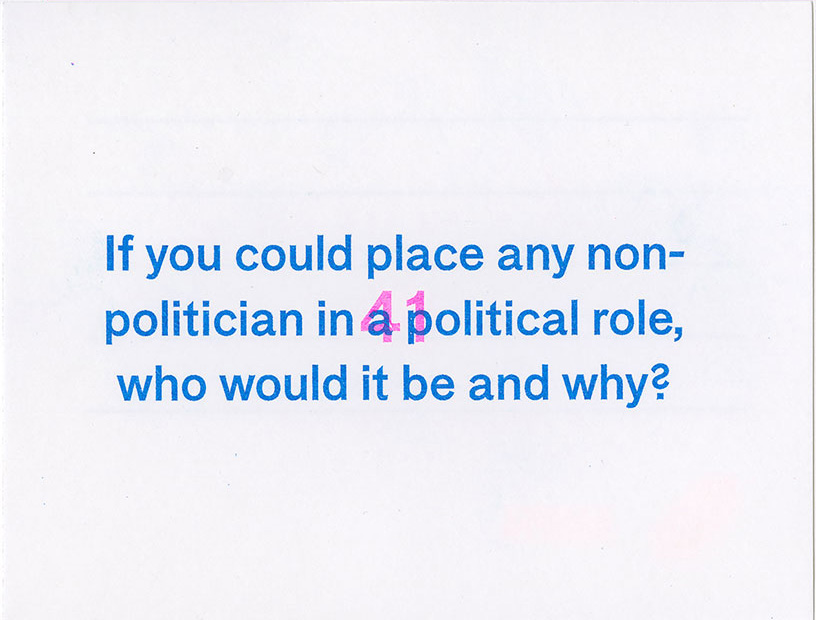
MS: What are some strategies that you all are using to break through this deep divide in political disengagement and distrust?
CH: I found that engaging with peers and doing some organizing has been helpful. Six months ago feels like a very different experience. Meeting face to face with people in my community (via video calls) or making phone calls, trying to organize is valuable to me personally. I feel like actively talking to my peers in my community is a means of civic engagement for now.
TM: I feel like if I had the answers to that, I would be a president of some country by now. So it’s a tough one. I think through dialogue, as Chris said, and also humor. Connecting it back to the work, I’m hoping that this work is somewhat humorous and that dialogue and humor is a good recipe for wherever you fall on the political spectrum. It can foster more conversations that are hopefully constructive. So that’s another plug to go to the website and engage.
MS: What is at stake for you and your community by taking the Census and then how do you see Breaking ICE relating to the 2020 Census?
TM: Advocating that your voice matters. I think that is at the core of both our piece and the Census. I live in Bayview, San Francisco, where it is a historically underserved community. We see what’s going on in the neighborhood all the time, where funding for education is so essential. I think that’s what the future is at stake for the community that we live in. To be counted so that policies and funding can be put to good use is so crucial for our community.
CH: I feel like there has been so much antagonism and intimidation in certain populations. Making sure the voices of undocumented individuals are counted is key. I personally have a difficult relationship with the Census since it was one of the mechanisms used during World War II to imprison Japanese Americans. I think there is a real danger potentially in participating, but I’m not saying people shouldn’t participate. I just think the stakes are real for people even if it seem like such a potential extreme outcome. I think it is a courageous thing to participate knowing some of the historical precedent of how the Census has been abused.
MS: During this time of social distancing, how do forms of visibility change? How do you think folks can remain visible?
TM: I’m going to pivot a little bit and say I’m a little skeptical about social media. I’m just trying to take everything offline. I have to do my courses, like you Chris, online and I’ve got enough Zoom sessions with my colleagues and whatnot. But in terms of remaining visible…I thought about just looking around our neighborhood. We take walks. We don’t get in the car to walk. We take walks in our neighborhood as prescribed by the city. I jot down things that I see and if there are any concerns, I actually do write to the elected official about that.
CH: I think I’m probably doing what many other people are doing. The number of classmates or friends or old colleagues that I’ve talked to in the past month that I haven’t talked to in a year or two has really gone up. I think that reaching out to my broader community has been a big thing. In my day to day life and my role as an educator, I think I’m trying to prioritize students’ health and wellbeing over stressing people out about creating art projects in really crazy circumstances.On a really personal level, I’m trying to make sure to get enough sleep. Prioritizing your health is such an important thing to do right now. Then from a political standpoint, I do think we’re seeing some collective action taking place. I think the visibility of the workers at Amazon or the Instacart shoppers, through action like strikes, are raising awareness for those individuals and the situations many workers are in. Within my own community, in terms of political action, I’m talking with students. Not necessarily political, but just around ways we can take care of our community, different sorts of fundraisers or articulating student and faculty perspectives around how the institution is responding to crisis. I’m trying to do some very simple organized discussions around that.
TM: So what am I doing to take care of myself? So each day, I try to take it one day at a time because we have kids in the home. If I think too far ahead, it’s not going to be healthy. I echo what Chris was saying about sleeping. We try to get enough sleep and stay healthy. I’ve tried not to be too politically engaged for my mental health probably. I do seek out the news, hopefully the truth and data-based reporting. I do not want to be too engaged in politics, to stay healthy.
MS: What is at stake for art when you are creating work that pertains to social and political reform?
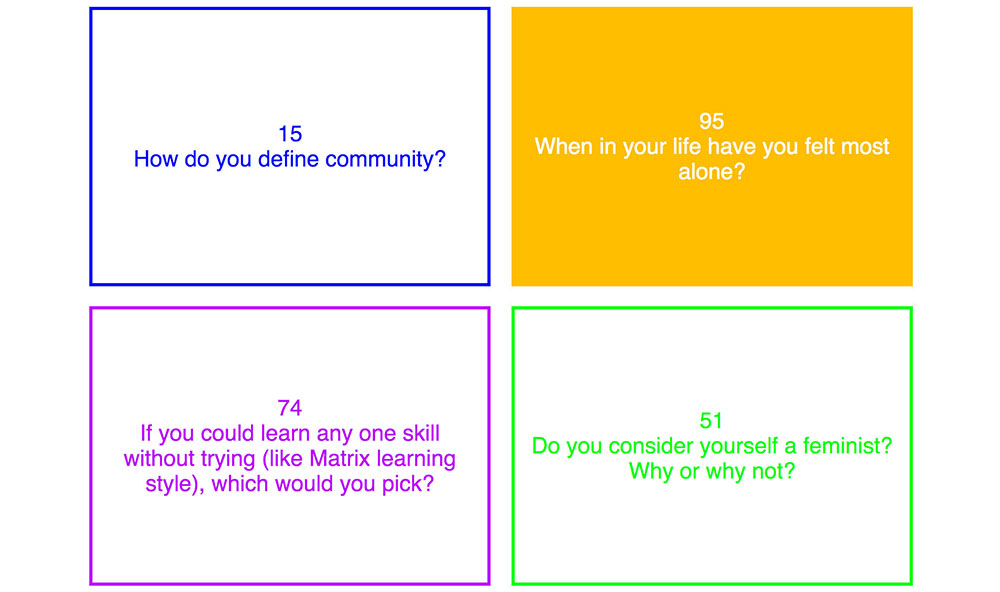
CH: What is at stake is creating an imagination around what is possible. When we started working on this iteration of the project a few months ago, the world was so different. In these moments, especially in these moments of crisis, the ability for art or social and political commentary is so valuable when imagining or seeding ideas of what could take place, rather than maybe what we are comfortable with. Imagining a better alternative is always a driving force in art and design for me.
TM: I suppose I want to talk about our work. For this exhibition we changed the questions a little bit. I personally have been seeking a more nuanced approach in terms of the kind of questions that we were asking so that it wasn’t overtly left or right or hopefully not so leading, like putting boundaries, parameters, on it. We tried really hard to get at questions that were open-ended. Whether we were successful or not I think is in how the viewers to respond. But that’s because I personally feel like a big factor in being political is to get as many people involved and participating.

